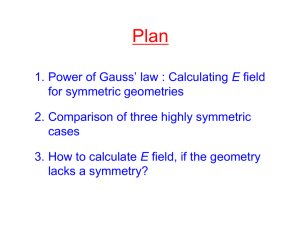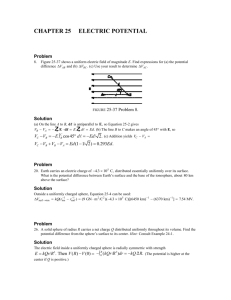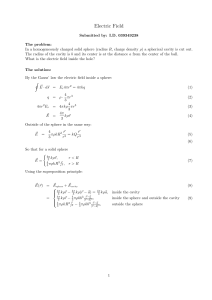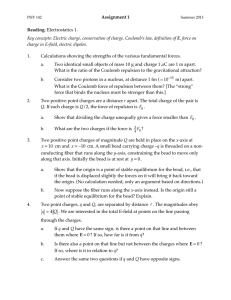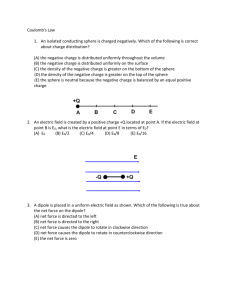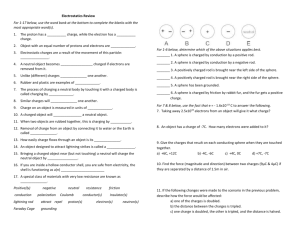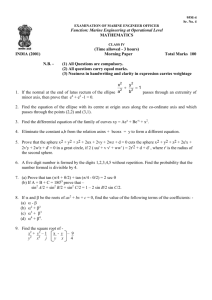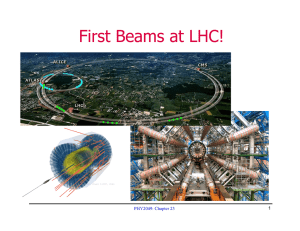4 Electric Potential due to a Continuous Charge Distribution
advertisement
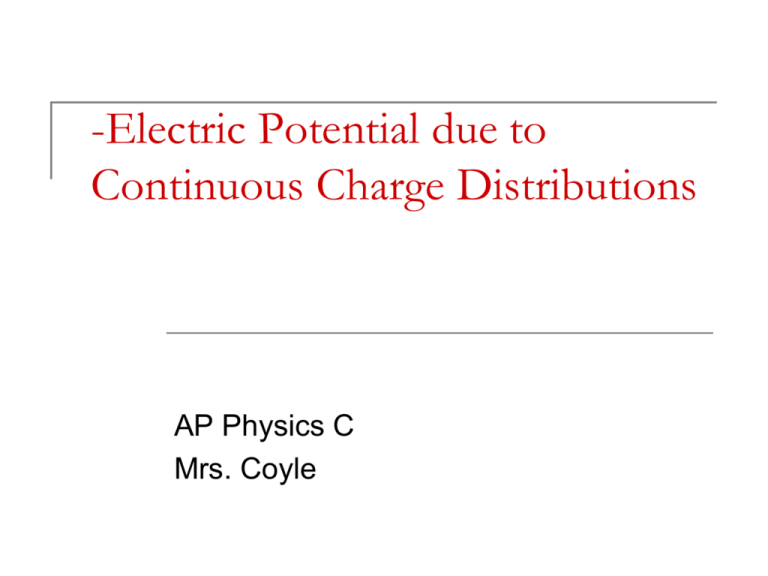
-Electric Potential due to Continuous Charge Distributions AP Physics C Mrs. Coyle Electric Potential –What we used so far! Electric Potential Potential Difference Potential for a point charge Potential for multiple point charges U V qo B U V E ds A qo q V ke r qi V ke i ri Remember: V is a scalar quantity Keep the signs of the charges in the equations, so V is positive for positive charges. You need a reference V because it is changes in electric potential that are significant. When dealing with point charges and charge distributions the reference is V=0 when r Electric Potential Due to a Continuous Charge Distribution How would you calculate the V at point P? Two Ways to Calculate Electric Potential Due to a Continuous Charge Distribution It can be calculated in two ways: Method 1: Divide the surface into infinitesimal elements dq Method 2:If E is known (from Gauss’s Law) E dA q / o dq V ke r B U V E ds A qo Method 1 Consider an infinitesimal charge element dq and treat it as a point charge The potential at point P due to dq dq dV ke r Method 1 Cont’d For the total potential, integrate to include the contributions from all the dq elements dq V ke r Note: reference of V = 0 is when P is an infinite distance from the charge distribution. Ex 25.5 : a) V at a point on the perpendicular central axis of a Uniformly Charged Ring Assume that the total charge of the ring is Q. Show that: dq V ke r keQ x 2 a2 Ex 25.5: b) Find the expression for the magnitude of the electric field at P Start with V and dV E x dx kQx Ans: E x 2 ( x a 2 )3/ 2 Note that at the center of the ring E=0. How else had we calculated this result? k eQ x 2 a2 Ex 25.6: Find a)V and b) E at a point along the central perpendicular axis of a Uniformly Charged Disk Assume radius a and surface charge density of σ. Assume that a disk is a series of many rings with width dr. Ans.:V 2πkeσ x 2 a 2 1 2 x Ex 25.6: Find a)V and b) E at a point along the central perpendicular axis of a Uniformly Charged Disk Start with V 2πkeσ x 2 a2 Ans: E x 2 k (1 x 1 2 x x2 a2 ) Ex25.7: Find V at a point P a distance a from a Finite Line of Charge Assume the total charge of the rod is Q, length l and a linear charge density of λ. Hint: dx ln( x x 2 a 2 ) x2 a2 Ans:V keQ ln a2 a 2 Method 2 for Calculating V for a Continuous Charge Distribution: If E is known (from Gauss’s Law) E dA q / o Then use: B U V E ds A qo Ex 25.8: Find V for a Uniformly Charged Sphere (Hint: Use Gauss’s Law to find E) Assume a solid insulating sphere of radius R and total charge Q For r > R, Q Ans : V ke r Ex 25.8: Find V for a Uniformly Charged Sphere A solid sphere of radius R and total charge Q For r < R, keQ 2 2 Ans : VD VC R r 2R 3 Ex 25.8:V for a Uniformly Charged Sphere, Graph The curve for inside the sphere is parabolic The curve for outside the sphere is a hyperbola
